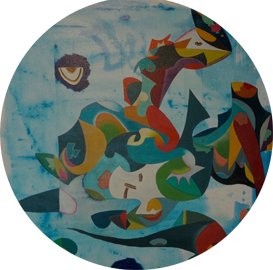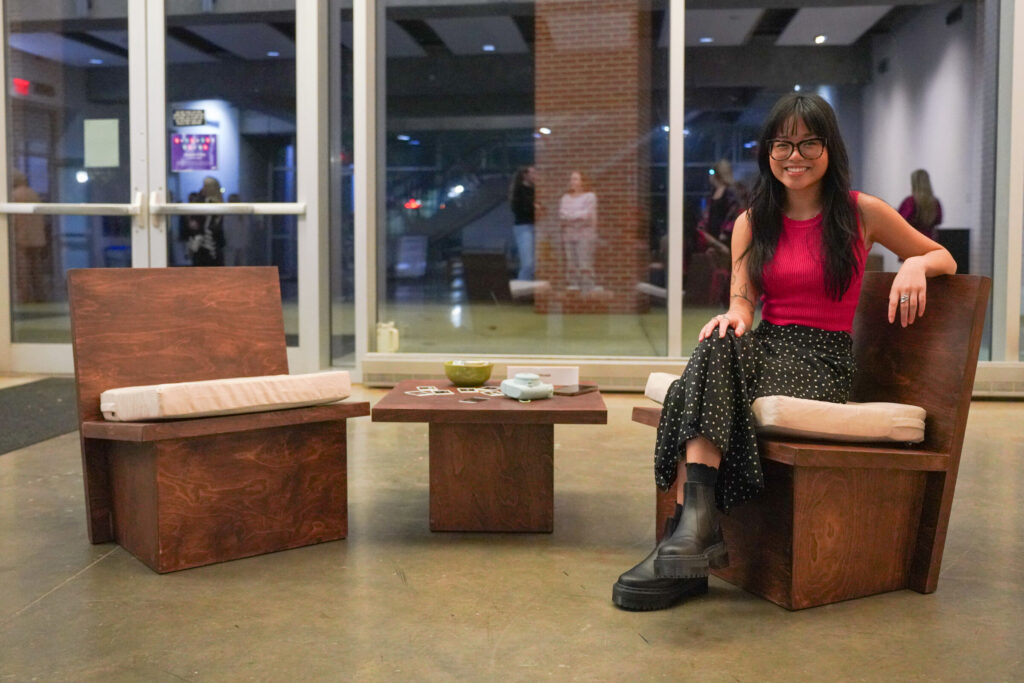Minors in Art & Art History
The Lamar Dodd School of Art offers three minors in Art and Art History that allow students to discover a variety of media and techniques associated with studio art, design, and history.
Students interested in receiving a minor in art can choose from a Art History Minor, a Studio Art Minor, and a Design + Media Minor. To declare a minor, log on to Athena, to Student Records, then My Programs, and select Minor.

Art History Minor
Students must complete six hours (2 courses) of Introduction to Art History 2000-level courses. (Note that ARHI 2300 and ARHI 2400 will help satisfy Area IV of the Core Curriculum.)
The Art History Minor is comprised of 15 hours of upper-level ARHI courses. Nine hours of 3000-level courses (3 courses) must be completed before a student is able to enroll in a 4000-level courses. Six hours (2 courses) must be at the 4000-level. Even as a registered minor, students need permission from the Area to register for a 4000-level class.
Requirements (15 hours)
Students must complete 3000-level courses in three of the following areas:
- Ancient, Late Antique, Medieval, and Asian
- Renaissance and Baroque
- 18th and 19th century
- 20th century and contemporary
Students must complete two 4000-level ARHI courses in any area.
For a complete list of art history courses, divided by area, see the UGA Bulletin.
Notes
- Of the 15 hours of upper-level art history required, 12 hours are required in residence.
- All courses used to satisfy the minor requirement must be passed with a grade of C or better.
- All minors must contain at least 9 hours of upper division course work.

Studio Art Minor
The Studio Art Minor presently consists of 18 credit hours: with a minimum of 3 hours of Art History and 15 hours of studio coursework, including 9 hours of upper division studio courses.
A maximum of 6 hours of transfer credit hours allowed (with School of Art approval).
Requirements (18 hours)
- ARHI 2300 or ARHI 2400
- One 1000-level studio course (3 hours)
- One 2000-level studio course (3 hours)
- Three studio courses at the 3000 level or above (9 hours)
(There is no guarantee that all minor courses can be taken in one area of concentration, but student should plan accordingly for upper-level studio choices by taking the appropriate 2000-level prerequisites)
Notes
- Courses taken to satisfy Core Areas I through V may not be counted as course work in the minor.
- Courses taken in Core Area VI may be counted as course work in the minor.

Minor in Design + Media
The minor in Design + Media consists of 15 hours of coursework focused on time-based media, photography and design and does not require any preliminary studio core coursework.
Note that graphic design is a high-demand major so most ARGD courses—aside from ARGD 2030—are limited to graphic design majors only.
Be aware that some courses may have required prerequisites so check before planning your course of study. Note that some Art classes have different CRN sections for majors and minors. CRN sections can be verified here.
Requirements (15 hours)
Select (3) courses from the following courses (9 hours):
No more than 6 of the 9 required hours for this section may be in 2000-level courses.
- ARGD 4410/6410
- ARST 2210 or (ARST 2205 and ARST 2205L ) or ARST2220
- Any ARGD courses 2000-level or above
- ARST 3205
- ARST 2710
- ARST 2800
- ARST 2810 or ARST 2810E
- ARST 3200
- ARST 3210
- ARST 3325
- ARST 3335
- ARST 3345
- ARST 3730
- ARST 3800
- ARST 4315/6315
- ARST 4830
- ARST 2600
- ARST 3660
Select one of the following history courses (3 hours):
(Student on Spring 2022 or earlier Bulletin can also use ARGD 3070E here.)
- ARHI 3065 | prerequisites apply
- ARHI 3530 | prerequisites apply
- ARHI 3080 | prerequisites apply
- ARHI 3300 | prerequisites apply
- ARTS 4910 | prerequisites apply
- ARID 3210 | no prerequisites
- ARID 3220 | no prerequisites
Select one of the following elective courses (3 hours):
- Any ARST/ARTS/ARGD/ARID/ARHI course at the 3000-level or higher. Prerequisites apply. Please refer to the UGA Bulletin.
Notes
- A minor must contain at least 9 hours of upper division course work.
- Courses from Core Areas I through V may not be counted as course work in the minor.
- Courses taken in Core Area VI may be counted as course work in the minor.
- A minimum grade of “C” (2.0) is required in minor course work. All upper-level courses must be taken in residence.

Student posing with furniture project. (Photo/Sidney Chansamone, sid.chansa@gmail.com)
Undergraduate Certificate in Studio Furniture Design and Fabrication
The Studio Furniture Design and Fabrication certificate is intended to instruct students in the art of furniture design. Students will be instructed in the use of hand tools and machines commonly available to studio furniture makers to construct furniture. Participants that have successfully completed the certificate will have the design and fabrication skills to work with others in making and refinishing furniture and do model building for architects, and the knowledge to develop a business plan for their own foray into a studio furniture business.
Requirements (15 hours)
- ARID 3340 Furniture Design
- ARID 4350/6350 * Interior Design Practicum
- ARST 1080 Three-Dimensional Design
- ARST 2400 Fundamentals of Sculpture
- ARST 3470 Wood as a Sculptural Medium
*An additional elective course may be substituted in place of the internship with justification and permission from the department.
Electives (3 hours)
Choose 1 course(s) from the following:
- ARID 2210 Concepts in Design
- ARID 3210 Design History I
- ARID 3220 Design History II
- ARST 4915/6915 Thematic Inquiry in Contemporary Art
- ARST 4995 Capstone Exhibition and Professional Practices
- ARTS 4900/6900 Professional Practices: The Business Side of Art
- ENTR 5500 Introduction to Entrepreneurship
- FORS 4530/6530 Wood Properties and Utilization
Additional Requirements
Successful completion of the certificate requires satisfactory completion of coursework, an internship, and a focal project.

Undergraduate Certificate in CAD/CAD Manufacturing for Jewelry and Fashion Accessories
The Certificate in Computer-Aided Design/Computer-Aided Manufacturing for Jewelry and Fashion Accessories (CAD/CAM) entails comprehensive training across several key areas, providing students with a robust foundation in both digital design and production. Students will become familiar with various CAD/CAM software programs, such as Rhino3D, Fusion 360, and the Adobe Suite, all of which are essential for the design and creation of jewelry and fashion accessories and knowledge of which opens opportunities to seek employment in numerous other product design industries and professions. Additionally, students will receive online industry training with Stuller Incorporated, a leading company in the global fine jewelry sector, specializing in Stuller’s proprietary software, MatrixGold. The training in MatrixGold will bolster students’ competitiveness in seeking CAD/CAM positions with more than 6,000 businesses and retailers worldwide that employ this Stuller proprietary software.
This certificate curriculum is designed to complement or add to an existing degree for students who are making progress toward an undergraduate degree or students who already have an undergraduate degree and wish to return for the sole purpose of securing this certificate and expanding their professional reach. The program of study will utilize currently available UGA courses, instructional personnel, Lamar Dodd School of Art studio art facilities, and the Stuller, Inc. online training platform Matrix Gold Training Academy.
Requirements (9 hours)
- ARST 3660 CAD/CAM for Objects and Jewelry
- ARST 4680 Directed Study in Jewelry/Metal
Additional Requirements
Admission
- Requirements: Admission will be on a rolling basis and per discretion of the certificate coordinator. Prospective students will be required to submit a completed application form, which will include a personal statement outlining their interest in the program, relevant experience, and career aspirations.
- Portfolio Submission: Applicants will be asked to provide a preliminary portfolio of their previous work or projects that demonstrate their interest and aptitude in design, crafting, or related fields
Last updated: September 30, 2025
